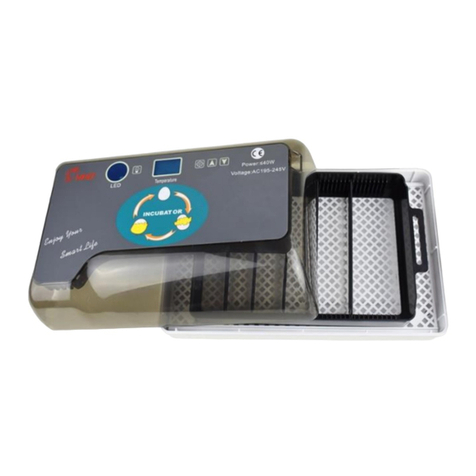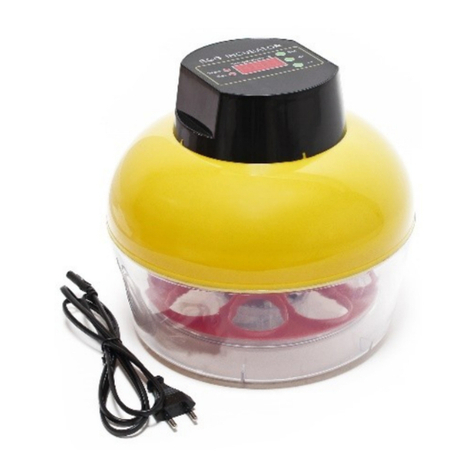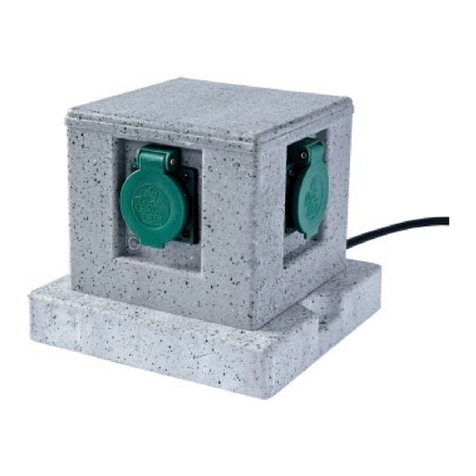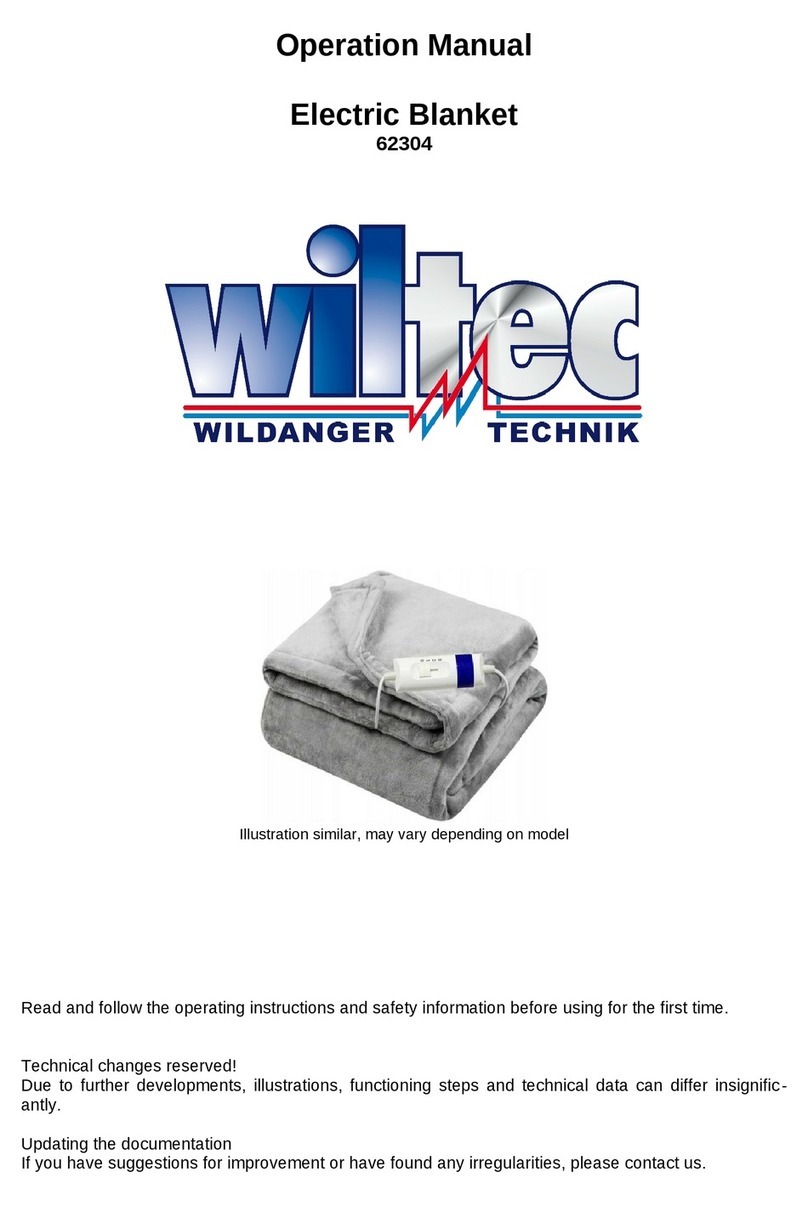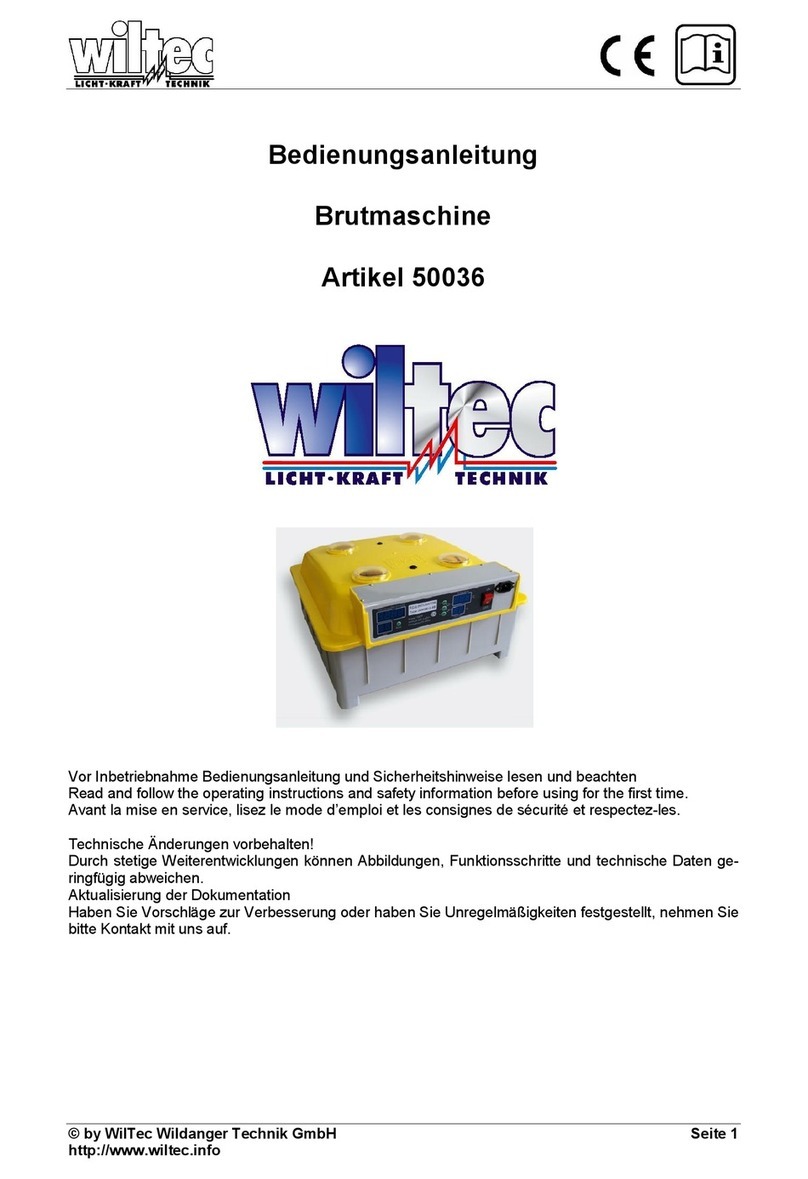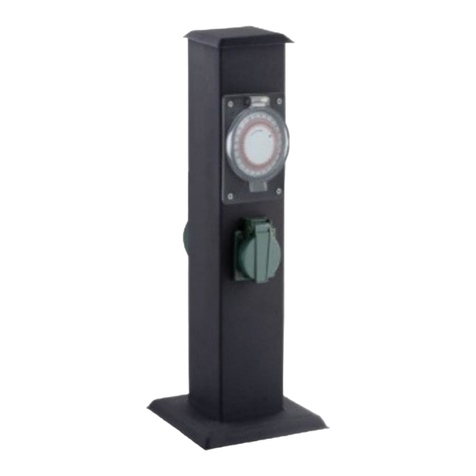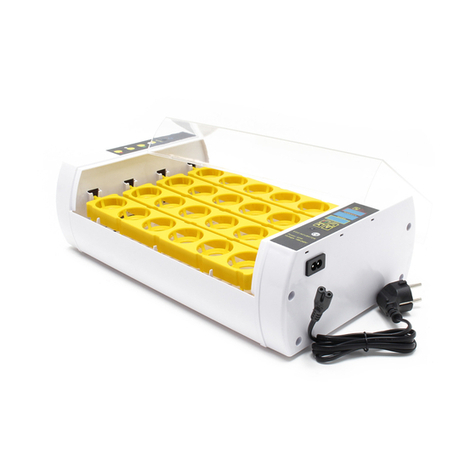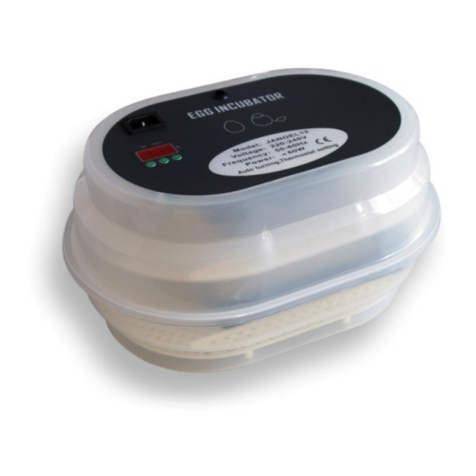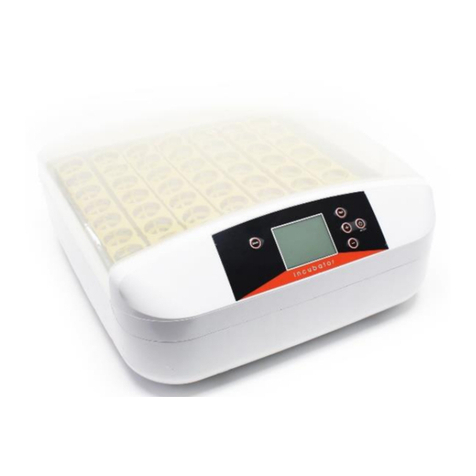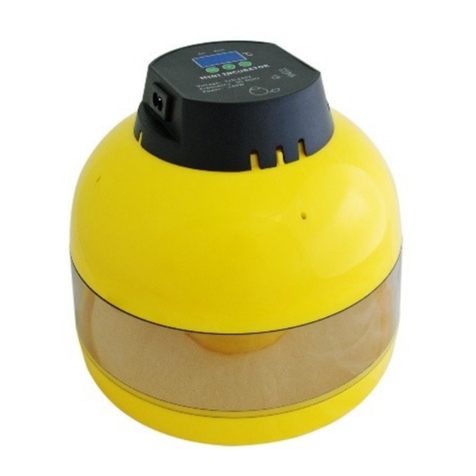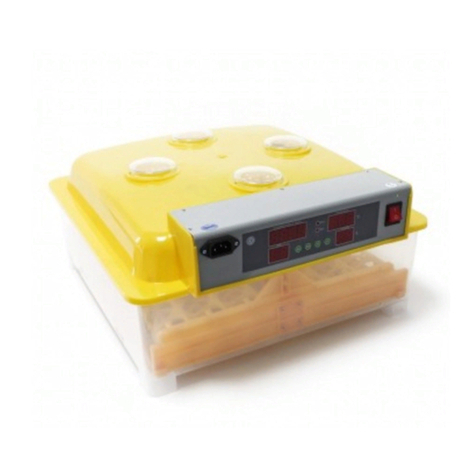© by WilTec Wildanger Technik GmbH Item 52168, 52169 Page 4
http://www.WilTec.de
http://www.aoyue.eu 03 2022-1
http://www.teichtip.de
Max. egg number
•52168: up to approx. 32 eggs (depending on clutch type)
•52169: up to approx. 48 eggs (depending on clutch type)
General notes
•This incubator allows you to maintain a constant temperature that will enable you to successfully
hatch a wide variety of reptile eggs. The incubation temperature, humidity, and other parameters
vary depending on the species. Therefore, we recommend that you consult a specialised
breeder who can advise you on the conditions for the species that you are planning to hatch.
•An alarm function signals when the internal temperature falls below or exceeds the temperature
limits set by the user. In addition, the incubator counts the number of days the eggs have been
incubated so that you are ready for the possible incubation date. The real-time temperature
display allows the user to monitor the indoor temperature as needed.
•The incubator does not have a cooling function. It is therefore necessary to monitor the ambient
temperature and, if necessary, move the incubator to a cooler spot.
Surrounding conditions
•The area where the incubator will be placed should be well ventilated, especially if there are
multiple incubators located in this room. There must be an efficient ventilation (no air draught!).
•Make sure that the incubator is placed on a flat, even, and solid surface, not exposed to direct
sunlight.
•It is recommended to place the incubator far away from heating sources, drafts, and windows
to avoid harmful changes of temperatures. Additionally, the incubator should be kept with the
included polystyrene packaging, which provides protection.
General information on breeding
1. When is the incubator ready?
The incubator should run for at least 24 hours before placing any eggs into it. If possible, let the
incubator run for a week without eggs. Thus, you will easily see if all parameters can be adjusted and
work as required. Additionally, you will learn how the incubator functions and adjustments work during
this time. There is nothing more harmful to the eggs than wrong adjustments of the incubator. If every-
thing works accordingly in the testing period, the incubator must be cleaned thoroughly with a suitable
disinfectant.
The intended humid and warm climate in the incubator is a good breeding ground for bacteria and fungi.
Not disinfecting the incubator invites the growth of these, posing a threat to the entire brood. Thus:
Before the first breeding and after every new breeding, thoroughly disinfect the incubator.
You need to make sure that the disinfectant is suitable for the material of the incubator. Otherwise, the
material can be attacked and the hatching process endangered.
Important note on parameters: Be sure to properly understand the term “internal temperature” (“inter-
nal”). Do not confuse the term “internal temperature (inside the egg)” with “internal temperature (inside
incubator).” The internal temperature within the incubator constantly changes up and down. The internal
temperature of the egg thus is the average temperature of the temperature fluctuations inside the incu-
bator.
